Mauritia mauritiana (Linnaeus, 1758)
Humpback
cowry, 49-102mm
Mauritia mauritiana are
primarily intertidal animals that prefer areas where there is strong water movement
during tidal changes. The largest specimens, which have shells that are usually
nicked and scarred from the rough conditions, live right in the zone where the
waves crash in at the edge of the reef. Sometimes at very low tide on a calm
day, you can see them exposed on the reef flat out at the edge of the breaker
zone between Kwajalein and Ebeye. More often they are just a little farther
out, right where the waves usually break, but usually at depths less than 2m.
On an extremely calm day, it is possible to swim into this zone from a boat
anchored oceanside, and you can see the large shells in reef depressions or
holes. Even on these calm days, smaller waves washing a diver back and forth
can be a bit treacherous; it is almost unimaginable what the conditions must
be like on a rough day with large waves. Because of this rough habitat, the
foot of the animal is very strong and able to hold onto the rock even under
the crashing surf. Smaller specimens can be found, usually at night at low tide,
along the reef edges of rocky beaches and riprap along the ocean side of Kwajalein,
and also along the riprap of the lagoon side along the Kwajalein ski boat area.
This species is found throughout the Indo-Pacific; the largest specimens are
seen in the Hawaiian Islands.
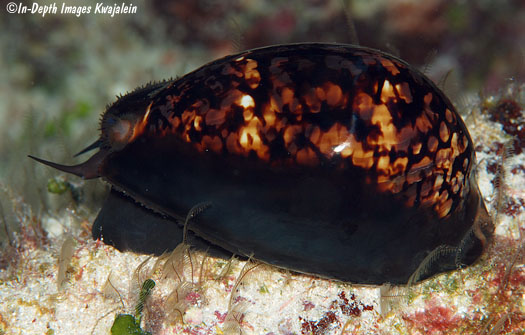
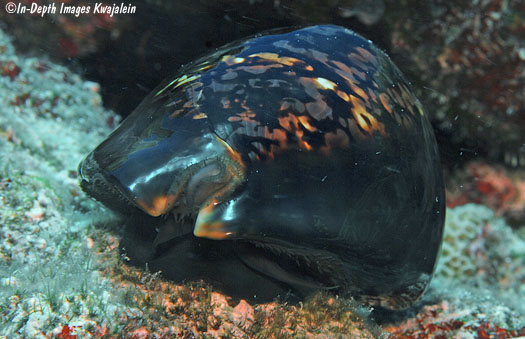
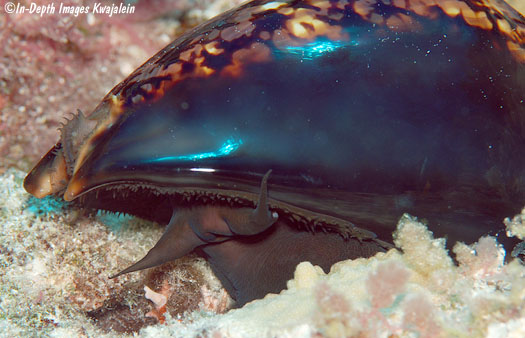
Below are a couple of small individuals
that were exposed on Kwajalein's intertidal seaward reef flat at night.
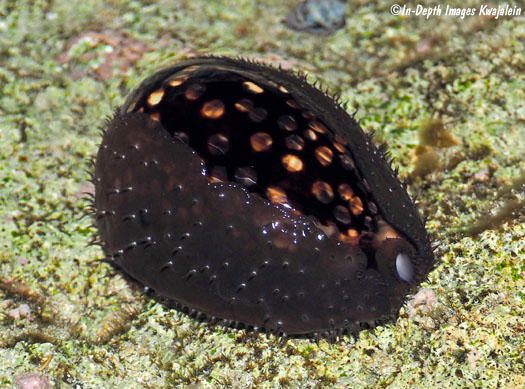
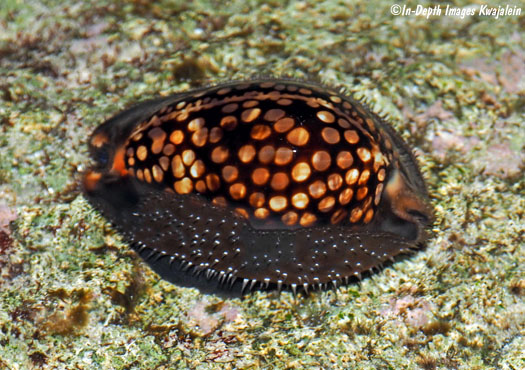
82.0mm, 16 September 1982
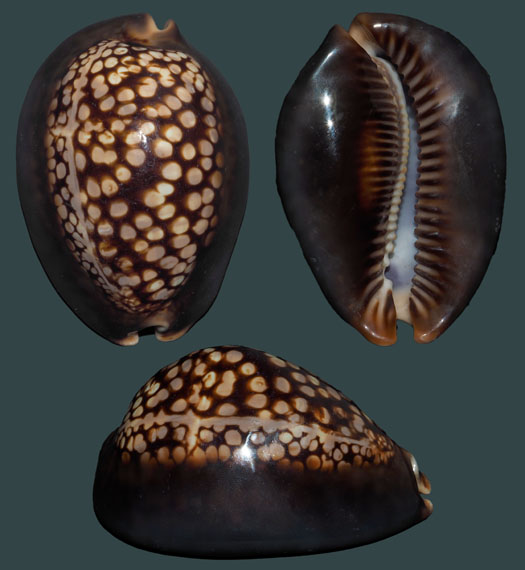
50.6mm, 1982

Empty juvenile shell found on beach.

Created
1 April 2008
Updated 2 April 2024
Back to
cowry thumbnails
Kwajalein Underwater Home








